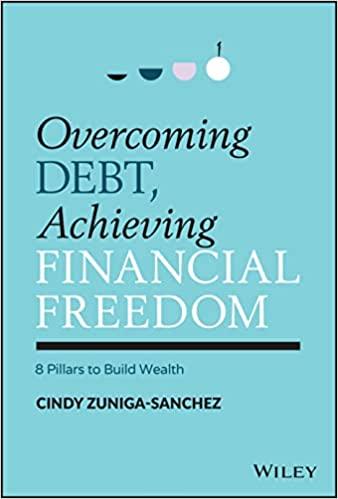Question
Jack has just retired and has received a lump sum pay-out of $1,300,000. He invests part of this pay-out on an investment property which earns
Jack has just retired and has received a lump sum pay-out of $1,300,000. He invests part of this pay-out on an investment property which earns 6 percent per annum and provides a perpetual income to him of $60,000 per year (assuming end-of-year withdrawals). He puts the rest of the pay out in another investment in the form of an annuity which earns 4 percent per annum. He wants to make equal annual withdrawals over the next 10 years from this investment annuity, leaving a balance of zero, to fund some overseas trips and a few other extravagances.
Required
(i) Calculate how much Jack has invested in the investment property.
(ii) Show how much extra Jack can expect to spend each year (assuming end-of-year withdrawals), over and above the $60,000 from the property investment, for the next ten years from the investment annuity. Note: ignore tax in your calculations.
(Accurate to the nearest dollar)
Hi, can someone teach me to concept for this question. For question A, are we supposed to use 60,000/(1- (1+0.03)^10 ? Because after year 10, he would withdraw all his money?
And Part B i have trouble understanding it.
Step by Step Solution
There are 3 Steps involved in it
Step: 1

Get Instant Access to Expert-Tailored Solutions
See step-by-step solutions with expert insights and AI powered tools for academic success
Step: 2

Step: 3

Ace Your Homework with AI
Get the answers you need in no time with our AI-driven, step-by-step assistance
Get Started


